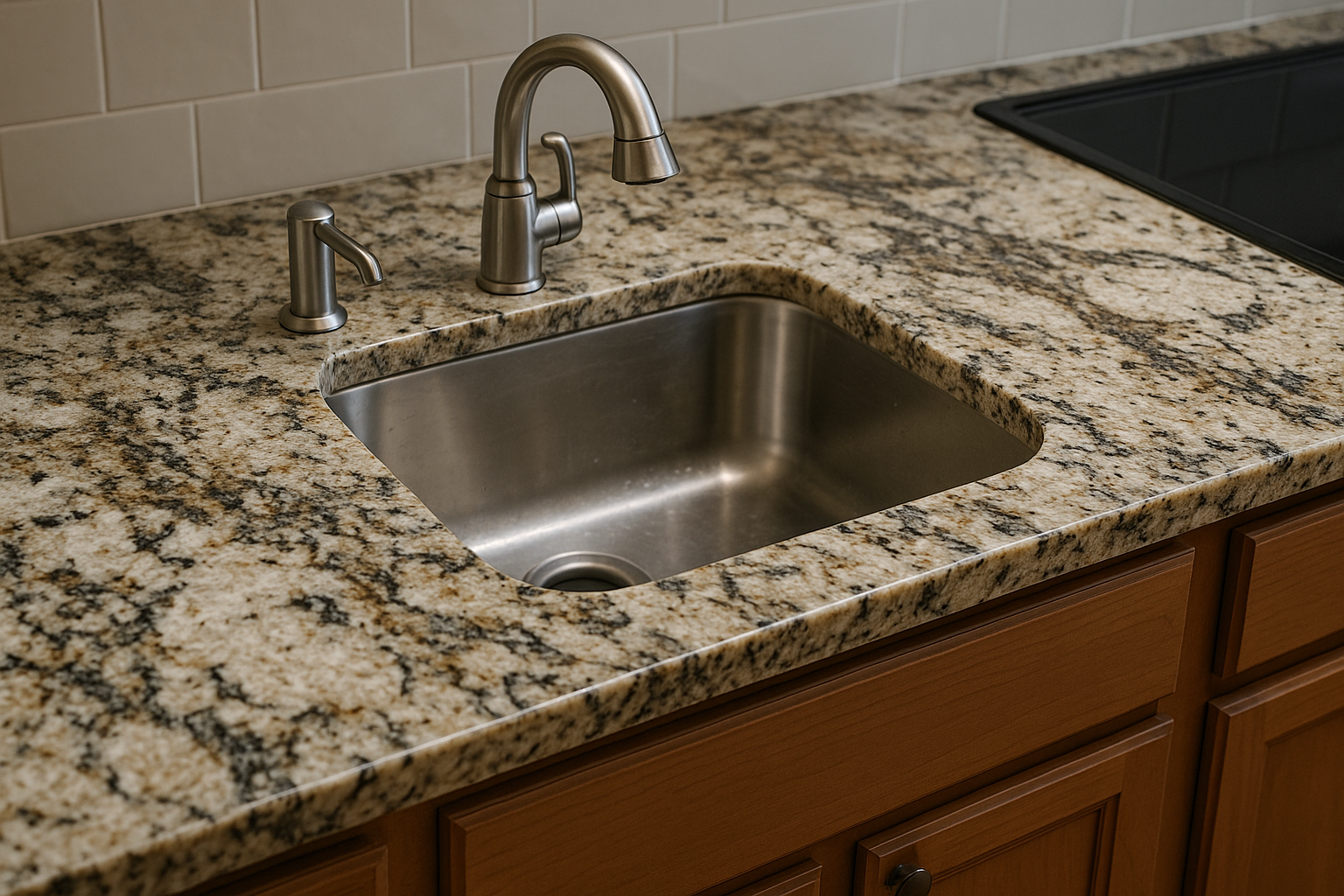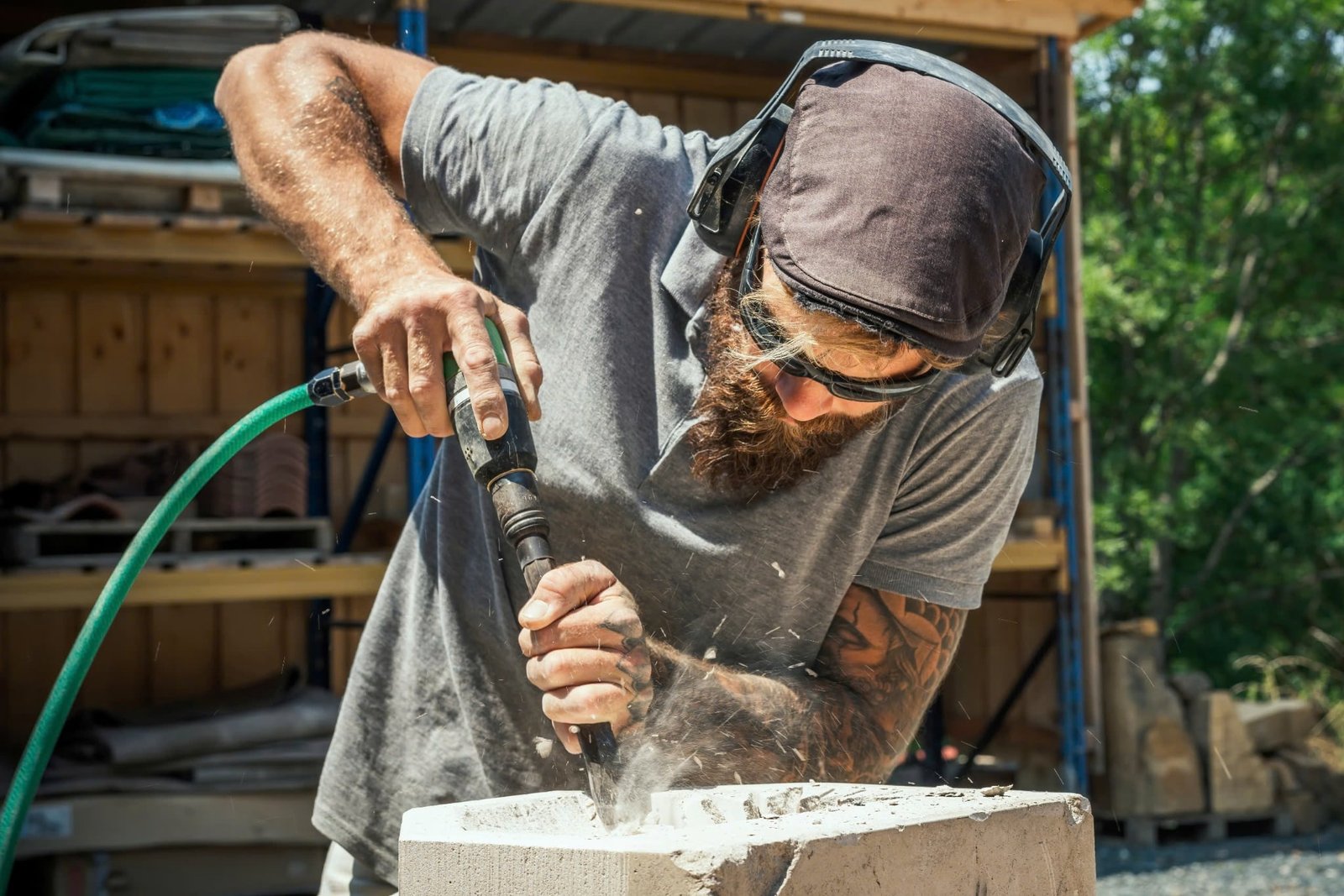
Granite countertop is a timeless and high-performing surface in residential and commercial kitchens alike.
Granite countertop is a timeless and high-performing surface in residential and commercial kitchens alike. Known for their durability, natural beauty, and wide variety of granite countertop colors, these surfaces can last for decades—if properly maintained. One of the most important aspects of granite countertop maintenance is sealing, which protects the porous stone from stains, water damage, and bacteria buildup.
But where exactly should you focus your sealing efforts? While the entire surface should be sealed, certain zones are significantly more vulnerable to wear, tear, and damage. This article explores where are the most critical areas to apply sealant on a granite countertop, how sealing affects overall countertop performance, and why targeted sealing can prevent costly repairs.

Understanding the Role of Sealant in Granite Countertop Maintenance
Granite, despite its solid appearance, is a naturally porous material. Unsealed or poorly sealed granite slabs can absorb water, oil, and food particles, leading to discoloration, permanent staining, and potential structural breakdown. Proper sealing creates a barrier that minimizes these risks, protecting the stone’s integrity and enhancing the life of your kitchen countertop.
To fully grasp the importance of this process, visit Why Is Sealing Important After Installing a Granite Countertop?
Key Benefits of Sealing Granite Countertops
- Stain Resistance: Sealant prevents liquids from soaking into the granite slab.
- Preservation of Appearance: Enhances granite countertop colors and keeps the stone looking polished.
- Bacteria Prevention: Sealed surfaces are easier to clean and more hygienic.
- Extended Lifespan: Helps avoid early countertop repair or replacement.
When Should You Seal Granite Countertops?
Ideally, granite countertops should be sealed during the final phase of countertop installation. However, ongoing maintenance requires resealing periodically, especially in high-traffic areas. You can learn about the best timing for sealing in this article: When Should Granite Countertop Be Sealed During the Installation Process?
The Most Critical Areas to Apply Sealant on a Granite Countertop
Let’s break down the zones that require the most attention during sealing:
1. Sink Cutouts and Surrounding Areas
The area around the sink is one of the most vulnerable zones. With constant exposure to water, soap, and splashing, it’s highly susceptible to moisture damage.
Why It Matters:
Unsealed edges around the sink can absorb water, leading to darkening, staining, or mold development under the stone.
Best Practice:
Apply a penetrating sealant liberally around the sink cutout and recheck this area during every maintenance cycle.
2. Faucet Holes and Accessory Drill Points
Holes drilled for faucets, sprayers, or soap dispensers often go unsealed or under-sealed.
Why It Matters:
These drill points can act as entryways for water. If they absorb moisture, discoloration or micro-cracking may occur around the holes.
Sealing Tip:
Use a small applicator brush to ensure the sealant reaches all internal edges of the drilled holes.
3. Countertop Seams
Granite countertops often consist of two or more slabs joined together with epoxy. These seams are potential problem areas.
Why It Matters:
Debris and moisture can collect in the joints, potentially weakening the bond or staining the slab edges.
Sealing Tip:
In addition to the epoxy adhesive, apply sealant along the seam lines. Inspect regularly for gaps or weakening.
4. Backsplash-Countertop Junction
This area, where the vertical backsplash meets the granite countertop, is prone to water runoff during cooking or cleaning.
Why It Matters:
If moisture seeps into this junction, it can damage cabinetry below or cause mold growth behind the backsplash.
Prevention:
Use a waterproof sealant along this seam and reseal annually to ensure continued protection.
5. Cooktop and Appliance Cutouts
Cooktops and built-in appliances are installed into custom cutouts in the granite countertop.
Why It Matters:
These cut edges are often unfinished and can easily absorb oils, water, and heat, leading to deterioration or discoloration.
Sealing Tip:
Use a heat-resistant sealant and clean the area thoroughly before application to prevent trapping grease beneath the sealant.
6. Overhangs and Countertop Edges
Edges and overhangs are exposed to regular human contact, cleaning friction, and accidental bumps.
Why It Matters:
These areas tend to lose sealant quicker than flat surfaces, increasing the risk of staining and chipping.
Best Practice:
Apply sealant to all visible edges and underneath overhangs where exposure is likely. Inspect edges every 6–12 months.
7. High-Use Surface Zones
Some sections of a granite countertop, like those near stoves, prep areas, or coffee stations, experience more frequent use.
Why It Matters:
Repeated exposure to liquids, heat, and acidic ingredients wears down the sealant faster in these areas.
Action Step:
Consider spot sealing these zones between full resealing sessions to maintain optimal protection.
How to Know If Your Granite Countertop Needs Resealing
Conduct the water drop test:
- Place a few drops of water on different parts of the countertop.
- If the water absorbs within a few minutes, resealing is necessary.
- If it beads up, the surface is still protected.
Other Signs of Wear:
- Faded shine or uneven appearance
- Watermarks or dark patches that don’t lift with cleaning
- Sticky or rough surface texture
Sealing Application Guide
Follow these basic steps for effective sealing:
- Clean the Surface: Use a pH-neutral granite cleaner to remove dirt and oil.
- Dry the Stone Completely: Moisture under the sealant can cause streaks or reduced effectiveness.
- Apply the Sealant: Use a soft cloth or sponge to apply evenly.
- Allow to Soak: Let the product sit for the time recommended by the manufacturer.
- Wipe Off Excess: Buff the surface to avoid haze and restore shine.
Choosing the Right Granite Countertop Sealant
Selecting the correct product is key to getting long-lasting results. Your choice depends on:
- Color of Granite: Lighter granite countertop colors are generally more porous.
- Use Frequency: High-use kitchens may require heavy-duty, long-lasting sealants.
- Finish Preference: Some sealants enhance the stone’s natural colors and depth, which is ideal for modern granite countertop design.
Sealant Types:
- Penetrating (Impregnating) Sealers: Absorb into the stone and last longer.
- Topical Sealers: Create a layer on the surface; may wear off quicker.
- Color-Enhancing Sealers: Enrich natural tones while providing protection.
Final Thoughts
Sealing a granite countertop is one of the most essential aspects of maintaining its aesthetic and structural quality. While sealing the entire surface is necessary, focusing on critical areas—such as sink cutouts, appliance holes, seams, backsplash joints, and high-use zones—provides targeted protection against the most common threats.
With regular granite countertop cleaning, timely resealing, and awareness of vulnerable zones, homeowners can ensure their investment continues to add value and beauty for years to come.

